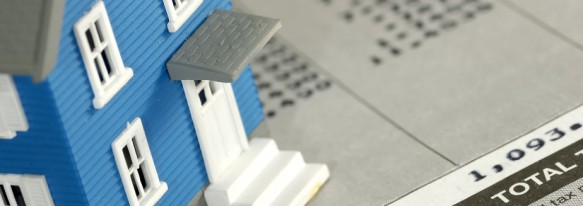


Property Taxes
Property taxes are a monetary contribution that the owner of a particular property are required to pay. The way that property taxes are levied differs by country, but in the United States, they are managed at a local level.
There are four broadly defined types of property that may be taxed:
- Land
- Whatever improvements have been made (thus creating or adding immovable man-made objects).
- Personal property (defined as objects that are movable by man).
- Intangible property (such as a copyright, a trademark, or a patent).
Basics
A property is taxed based on a percentage of its appraisal. Every property under the jurisdiction of the government must in some way be appraised and taxed, and it is calculated using what is known as a millage rate, or the total amount of tax per 1000 currency units of property value. The millage rate (and thus the percentage) may be the same throughout a municipality, but this will also mean properties of higher value will owe higher property tax rates.
Then, the homeowner themselves can actually give their own appraisal to the municipality and they can accept it based on their claims, though a tax assessor may question the veracity of such claims in greater detail.

Municipalities will be able to give proper appraisals of the houses’ market value by creating an annual assessment ratio, which is the tax imposed on the fair market value of the community at large. To maintain a fair and balanced amount of taxation on the part of the communities, states may tax those that undervalue or overvalue the market value of homes.
The market value can be assessed by a tax assessor using a number of different categories, including the size, accessibility, desirability and location of the property. The tax assessor will then notify the homeowner of the property value, who may be able to challenge the assessor’s evaluation.
The American federal government has maintained three significant provisions to prevent the abuse of property taxation on the state and municipal level. The first provision is a constitutional limitation on the ability for the federal government to impose their own property taxes. The second provision is an equal protection rule that prevents personal biases from increasing or decreasing taxation. The third limitation is known as the privileges and immunities provision, which gives equal representation to all taxpayers.
 One issue that has actually resulted from an increase in property taxes is that of urban sprawl. Since certain municipalities or districts may impose a lower tax rate than the one beside it, property development is at times can be either more horizontal or more vertical. Also, property developers may be motivated to buy cheaper land just outside of a city (such as a farm) because of its low property taxes, but the eventual catch-up of the suburbs may increase those taxes, causing developers to abandon what they started. Governments have implemented certain measures to alleviate such problems, such as creating defined city boundaries (like a greenbelt), introducing tax deductions on high-density housing, and current-use valuation, which ignores the location and focuses on the inherent value of a piece of land. The latter is common when the urban sprawl catches up to a farm, for example.
One issue that has actually resulted from an increase in property taxes is that of urban sprawl. Since certain municipalities or districts may impose a lower tax rate than the one beside it, property development is at times can be either more horizontal or more vertical. Also, property developers may be motivated to buy cheaper land just outside of a city (such as a farm) because of its low property taxes, but the eventual catch-up of the suburbs may increase those taxes, causing developers to abandon what they started. Governments have implemented certain measures to alleviate such problems, such as creating defined city boundaries (like a greenbelt), introducing tax deductions on high-density housing, and current-use valuation, which ignores the location and focuses on the inherent value of a piece of land. The latter is common when the urban sprawl catches up to a farm, for example.
State Differences
The best states to live in based on property tax rates are those that need to pay a lower percentage of their house’s property to the municipality. The rankings for the best are as follows:
- Louisiana – 0.18%
- Hawaii – 0.26%
- Alabama – 0.33%
- Delaware – 0.43%
- West Virginia – 0.49%
The worst states for property taxation require a higher amount of the property’s value to be paid to the municipality. Here are the worst five:
- New Jersey – 1.89%
- New Hampshire – 1.86%
- Texas – 1.81%
- Wisconsin – 1.76%
- Nebraska – 1.70%
Conclusion
Property taxation is a complicated matter because of the ever-changing nature of property. Factors like commuting, agricultural demand and infrastructural development may turn an isolated community into a prized living space, thus requiring changes in rates. Unfortunately, there are some unwanted results of urban planning affected by such taxation, but municipal governments are well aware of these, and the financial incentives caused by such taxation is now being fought in a number of ways.












